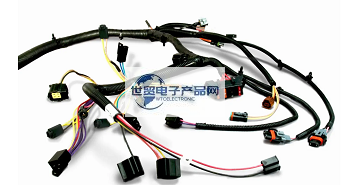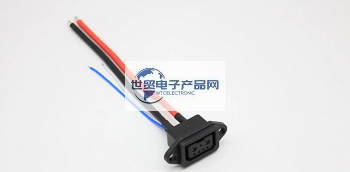Categorization:Product Information
Energy-saving and environmentally friendly electric vehicles have become an inevitable trend in the automobile industry. However, while automobile companies in various countries are devoting themselves to the research and development of electric vehicle technology, the charging standards of electric vehicles are also an important factor affecting their popularization. With the increasing support for electric vehicles in various countries and the construction of more and more charging stations, the standards of various countries are already facing direct conflicts.

-------------------------------------------------------------------------------------------------
1. ComboCombo socket can allow slow and fast charging of electric vehicles. It is currently the most widely used socket type in Europe, including Audi, BMW, Chrysler, Daimler, Ford, General Motors, Porsche and Volkswagen, all equipped with SAE (American Society of Automotive Engineers) charging interface developed. Detailed explanation of the world's five major electric vehicle charging connector standards On October 2, 2012, the revised draft of SAE J1772 voted by members of relevant SAE committees became the only official DC charging standard in the world. The introduction of this standard is to change the status quo of mixed charging systems and increase consumers' enthusiasm for purchasing electric vehicles. The core of the standard for DC fast charging based on the J1772 revision is the Combo Connector. A previous version of this standard (developed in 2010) specified the specifications of the base J1772 connector for AC charging, with low charging levels (AC Level 1 for 120V and Level 2 for 240V). This basic connector has been widely used today and is compatible with Nissan Leaf, Chevrolet Volt and Mitsubishi i-MiEV electric vehicles. In addition to all the original functions, the Combo Connector in the new version of the J1772 standard formulated in 2012 also has two more pins, which can be used for DC fast charging, but it is not compatible with old electric vehicles currently produced. Advantages: The biggest advantage of Combo Connector is that in the future automakers can use a socket on their new models, which is not only suitable for the first generation of smaller basic AC connectors, but also for the second generation of larger Combo Connectors. The latter can provide DC and AC currents for charging at two different speeds. Disadvantages: In fast charging mode, the charging station needs to provide up to 500 volts and 200 amps of current. 2. CHAdeMOCHAdeMO is the abbreviation of CHArge de Move. It is a CHAdeMO socket supported by Japan's Nissan and Mitsubishi Motors. CHAdeMO translates from Japanese to mean "the charging time is as short as a coffee break". This DC fast charging socket can provide a maximum charging capacity of 50kw. Detailed explanation of the world's five major electric vehicle charging connector standards Electric vehicle models supporting this charging standard include: Nissan Leaf, Mitsubishi Outlander plug-in hybrid vehicle, Citroen C-ZERO, Peugeot iON, Citroen Berlingo, Peugeot Partner, Mitsubishi i-MiEV, Mitsubishi MINICAB-MiEV truck, Honda Fit electric version, Mazda DEMIO EV, Subaru Stella plug-in hybrid vehicle, Nissan eEV200, etc. It should be noted here that both Nissan Leaf and Mitsubishi i-MiEV electric vehicles have two different charging sockets, one of which is suitable for the basic J1772 connector, which is the Combo connector introduced in the first part; The other is a connector suitable for the CHAdeMO standard in Japan. The fast charging method adopted by CHAdeMO is shown in the figure, and the current is controlled by the car's CAN bus signal. That is, while monitoring the state of the battery, calculating the current value required for charging in real time, and sending a notification to the charger through the communication line; The fast charger receives the current command from the car in time and provides the current at the specified value. Detailed explanation of the world's top five electric vehicle charging connector standards. Through the battery management system, it monitors the battery status while controlling the current in real time, fully realizing all functions required for fast and safe charging, ensuring that charging is not limited by battery versatility. In Japan, 1,154 fast chargers installed according to CHAdeMO standards are in use. In the United States, CHAdeMO's charging stations have also been widely "cast". The latest data from the U.S. Department of Energy shows that there are currently 1,344 CHAdeMO AC fast charging stations in the United States. Detailed explanation of the world's top five electric vehicle charging connector standards Advantages: In addition to the data control line, CHAdeMO also uses CAN bus as the communication interface. Due to its superior noise immunity and high error detection capabilities, communication stability and reliability are high. Its good charging safety record has been recognized by the industry. Disadvantages: CHAdeMO was originally designed to have a charging output power of 100 kilowatts, and the connector is very bulky, but the output power in the charging vehicle is only 50 kilowatts. 3. Tesla Tesla cars have their own set of charging standards, claiming to be able to fully charge more than 300 kilometers in 30 minutes. Therefore, the maximum capacity of its charging socket can reach 120kw and the maximum current can reach 80A. Detailed explanation of the world's top five electric vehicle charging connector standards Currently, Tesla has 908 super charging stations in the United States. In order to enter China, Tesla has also established 7 super charging stations in my country, including 3 in Shanghai, 2 in Beijing, 1 in Hangzhou, and 1 in Shenzhen. In addition, in order to better integrate into various regions, Tesla plans to give up the control of charging standards and adopt the national standards of various countries, which has already been implemented in China. Detailed explanation of the world's top five electric vehicle charging connector standards Then the problem comes. Although the beneficial effect of Tesla's doing this is that Tesla owners can borrow the huge charging network established under the power of the Chinese government to charge; Tesla boosts product sales. The question is, how do owners who have already purchased Tesla models charge after the standards change. If there is no corresponding solution. The contradictions faced by Tesla owners are: First, they can only charge at charging stations built before the standard change, and charging convenience will not improve over time; The second is to find Tesla to return the car. Advantages: Advanced technology and high charging efficiency. Disadvantages: It is contrary to the national standards of various countries, and it is difficult to increase sales without compromise; After the compromise, the charging efficiency will be compromised, and it is in a dilemma. 4. CCS In order to change the chaotic status quo of charging interface standards, the eight major American and German manufacturers Ford, General Motors, Chrysler, Audi, BMW, Mercedes-Benz, Volkswagen and Porsche released the "Joint Charging System" in 2012. "Combined Charging System", i.e., the "CCS" standard, "Combined Charging System", "CCS" standard. Detailed explanation of the world's top five electric vehicle charging connector standards. The "joint charging system" can unify all existing charging interfaces, so that single-phase AC charging, fast three-phase AC charging, household DC charging and overspeed DC charging can be completed with one interface. Charging four modes. Detailed explanation of the world's top five electric vehicle charging connector standards SAE has selected the joint charging system as its standard. In addition to SAE, the European Automobile Manufacturers Association (ACEA) has also announced that it has selected the joint charging system as the DC/AC charging interface. Starting from 2017 It will be used for all plug-in electric vehicles sold in Europe. Since Germany and China unified electric vehicle charging standards last year, China has also joined the European and American camp, bringing unprecedented opportunities for the development of electric vehicles in China. Zinoro 1E, Audi A3 e-tron, BAIC E150EV, BMW i3, Denza, Volkswagen e-up, Changan Eado EV and Smart EV all belong to the "CCS" standard camp. Advantages: BMW, Daimler and Volkswagen, the three German automakers, will increase their investment in electric vehicles in China, and CCS standards may be more beneficial to China. Cons: EVs that support the 'CCS' standard, either smaller sales or just starting to go on sale. 5. GB/T 20234 China issued the General Requirements for Plugs, Sockets, Vehicle Couplers and Vehicle Jacks for Conductive Charging of Electric Vehicles (GB/T20234-2006) in 2006. This national standard specifies in detail the connection classification of charging current 16A, 32A, 250A AC and 400A DC, mainly drawing on the standard proposed by the International Electrotechnical Commission (IEC) in 2003, but this standard does not specify the number of connection pins, physical size and interface definition of the charging interface. In 2011, China introduced the recommended standard GB/T20234-2011, replacing part of the contents in GB/T20234-2006, which stipulated that the AC rated voltage should not exceed 690V, the frequency should not exceed 50Hz, and the rated current should not exceed 250A; The rated DC voltage shall not exceed 1000V and the rated current shall not exceed 400A. Detailed explanation of the world's five major electric vehicle charging connector standards. Advantages: Compared with the 2006 version of the national standard, more charging interface parameters are calibrated in detail. Disadvantages: Standards are still not perfect. In addition, it is only a recommended standard and is not enforced. Car companies all over the world have gradually realized that "standards" are the key factor that affects the development prospects of electric vehicles. We have also seen that global charging standards have gradually moved from "diversification" to "centralization" in recent years. However, in order to truly realize the unification of charging standards, in addition to interface standards, current communication standards are also needed. The former is related to whether the connectors match, while the latter affects whether the plug can be powered on when inserted. There is still a long way to go to unify all charging standards for electric vehicles. Car companies and governments need to further "open their posture" so that electric vehicles can have a future.

---------------------------------------------------------------------------------------------------------------6------------------------------------------------------------------------------------------------------------------------------------------------------------------------------------------ If you have related [connector wiring harness and cable production] purchasing/purchasing needs or want to purchase/understand which connector wiring harness and cable product solutions we can provide, please contact our business staff below; If you have related sales/resources and promotion needs of [Connector Wiring Harness and Cable Production], please click "→ Business Cooperation ←" to negotiate with a dedicated person!